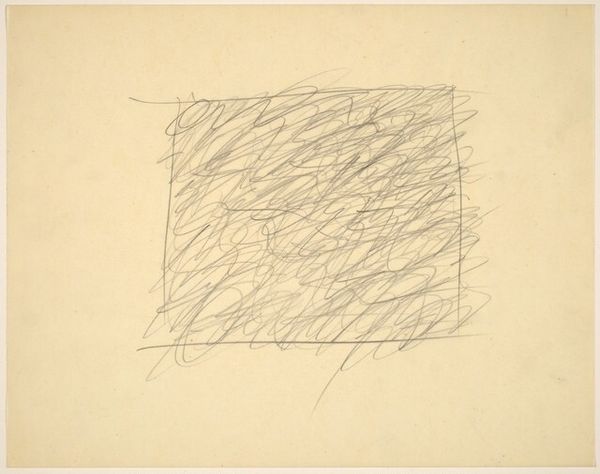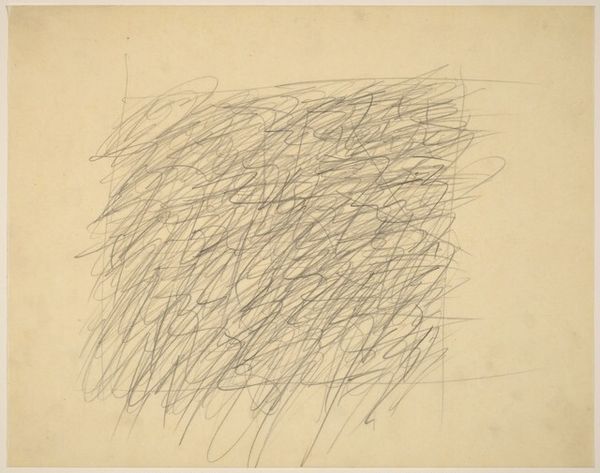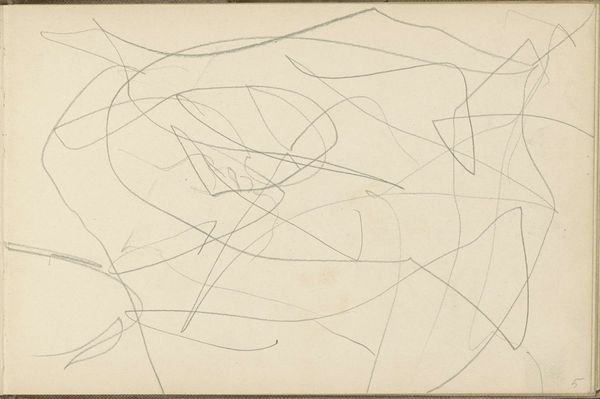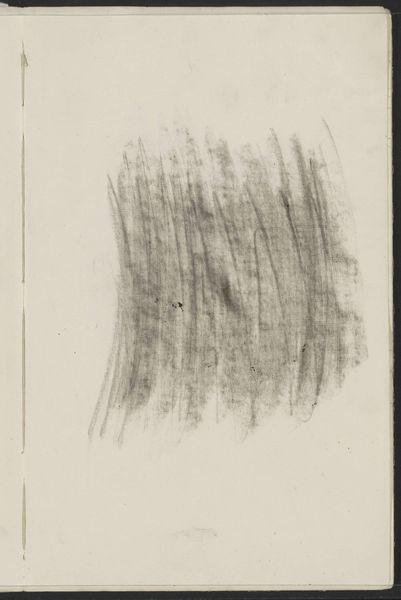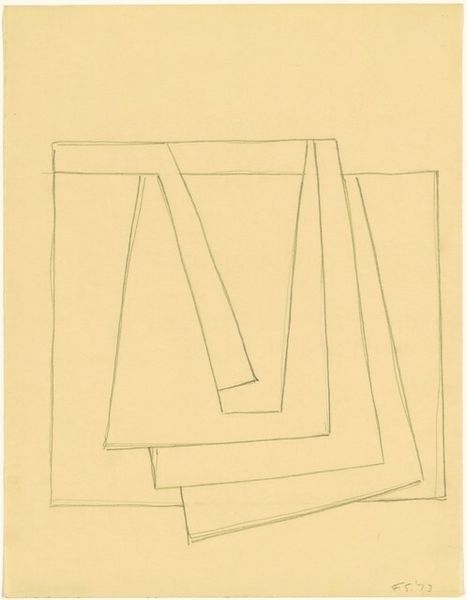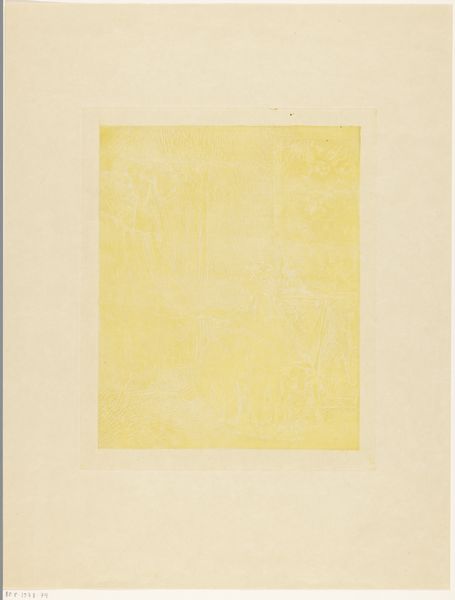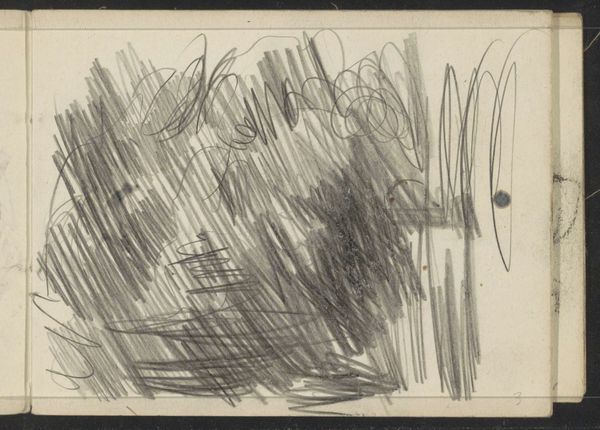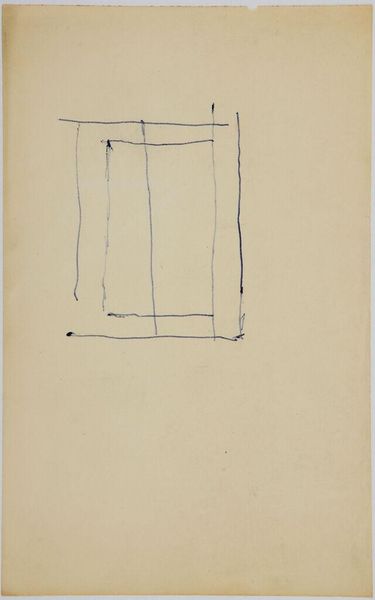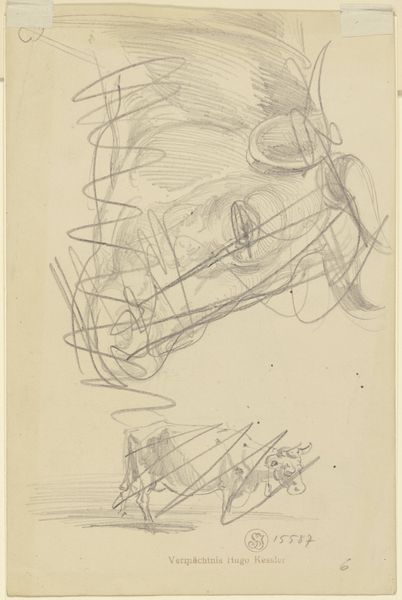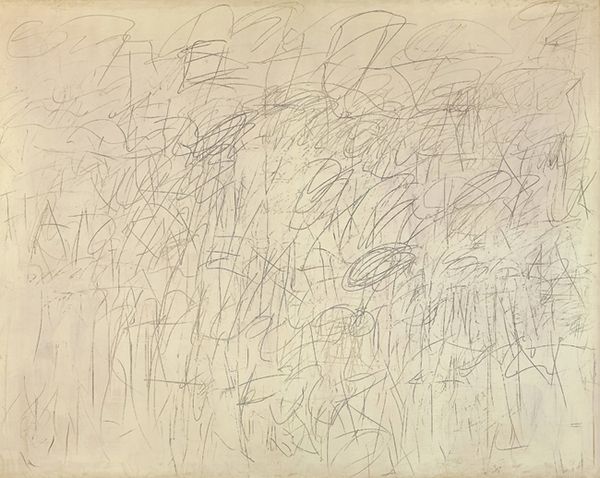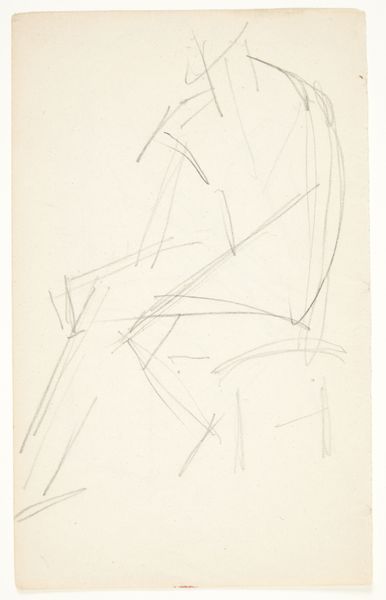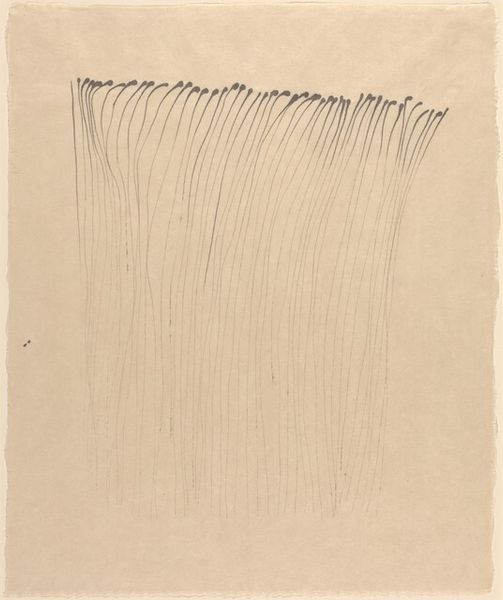
drawing, pencil
#
abstract-expressionism
#
drawing
#
black-mountain-college
#
pencil
#
geometric-abstraction
#
abstraction
#
line
#
modernism
Dimensions: overall: 35.1 x 27.6 cm (13 13/16 x 10 7/8 in.)
Copyright: National Gallery of Art: CC0 1.0
Curator: Before us hangs an Untitled piece by Cy Twombly, believed to be from around the 1950s. It is a pencil drawing. Editor: It's… intense. A tightly wound box of scribbles. Makes me think of overstimulated thoughts and the frantic nature of processing sensory overload. Curator: Let’s unpack that. The medium itself, humble pencil on paper, belies the raw energy it conveys. We’re seeing line acting almost as a field—a dense accumulation of marks forming a seemingly simple geometric structure. Editor: But that simple geometry traps the chaotic lines. How does the framing influence your view of the materiality? Are you saying he's using the mundane to explore these tensions, Curator? Because I'm seeing more than just formal considerations. This could be about the anxiety of the Cold War era. Curator: Precisely. In the socio-political landscape, consider that mass production and consumption were soaring. Here, Twombly utilizes repetitive gestures – not unlike factory labor – within the constraints of drawing to perhaps mirror and question that rapid expansion of mechanized work. The scribbles resemble shorthand. It can suggest a kind of coded language. Editor: Right, or the censoring of speech. To me, it also embodies a raw, pre-verbal expression—maybe resistance to dominant patriarchal structures, expressed through art when other avenues of dissent were constrained for women and marginalized voices. Did his artistic practice engage with these ideas explicitly at the time, or are we retrojecting these narratives onto the artwork? Curator: While he may not have been actively or explicitly aligning with certain activist platforms, the abstraction provided a means of expressing something that exceeds the directly representational or the literal—this gets particularly exciting if you consider Twombly's creative processes as physical labor. His act of 'making' moves to the fore. Editor: It does push against conventional art hierarchies by elevating this process. What an interesting connection—the 'high art' of drawing actually being quite grounded in tactile experience. I guess, after looking a while longer, I can’t help but find this surprisingly compelling and poignant in what was a climate of social unease. Curator: Yes, the simplicity in materials, paired with the controlled energy, creates space for ongoing dialogue. It asks us to reconsider the artist's position within the broader scope of material production and its social impact.
Comments
No comments
Be the first to comment and join the conversation on the ultimate creative platform.
